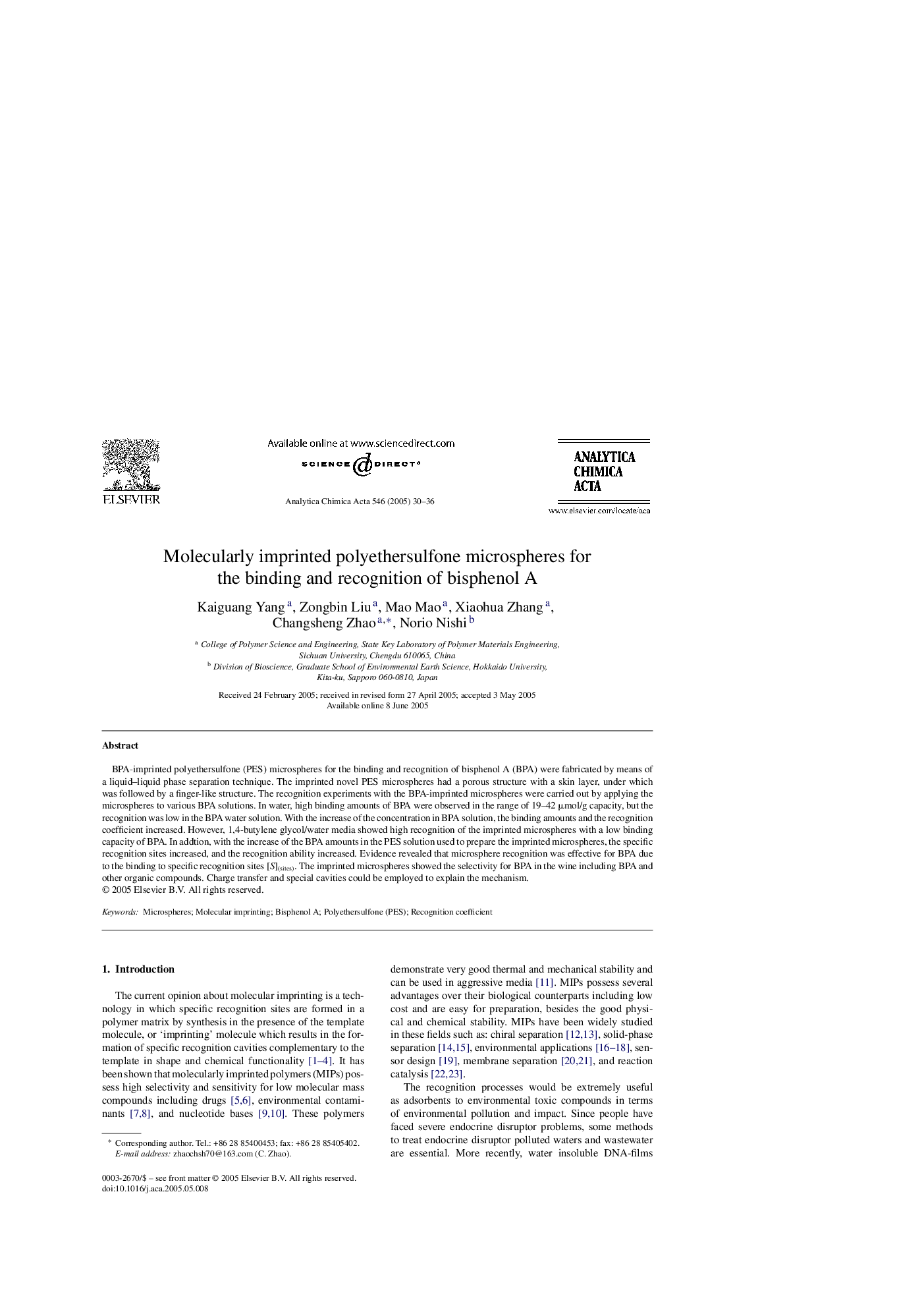| Article ID | Journal | Published Year | Pages | File Type |
|---|---|---|---|---|
| 10528946 | Analytica Chimica Acta | 2005 | 7 Pages |
Abstract
BPA-imprinted polyethersulfone (PES) microspheres for the binding and recognition of bisphenol A (BPA) were fabricated by means of a liquid-liquid phase separation technique. The imprinted novel PES microspheres had a porous structure with a skin layer, under which was followed by a finger-like structure. The recognition experiments with the BPA-imprinted microspheres were carried out by applying the microspheres to various BPA solutions. In water, high binding amounts of BPA were observed in the range of 19-42 μmol/g capacity, but the recognition was low in the BPA water solution. With the increase of the concentration in BPA solution, the binding amounts and the recognition coefficient increased. However, 1,4-butylene glycol/water media showed high recognition of the imprinted microspheres with a low binding capacity of BPA. In addtion, with the increase of the BPA amounts in the PES solution used to prepare the imprinted microspheres, the specific recognition sites increased, and the recognition ability increased. Evidence revealed that microsphere recognition was effective for BPA due to the binding to specific recognition sites [S](sites). The imprinted microspheres showed the selectivity for BPA in the wine including BPA and other organic compounds. Charge transfer and special cavities could be employed to explain the mechanism.
Related Topics
Physical Sciences and Engineering
Chemistry
Analytical Chemistry
Authors
Kaiguang Yang, Zongbin Liu, Mao Mao, Xiaohua Zhang, Changsheng Zhao, Norio Nishi,
